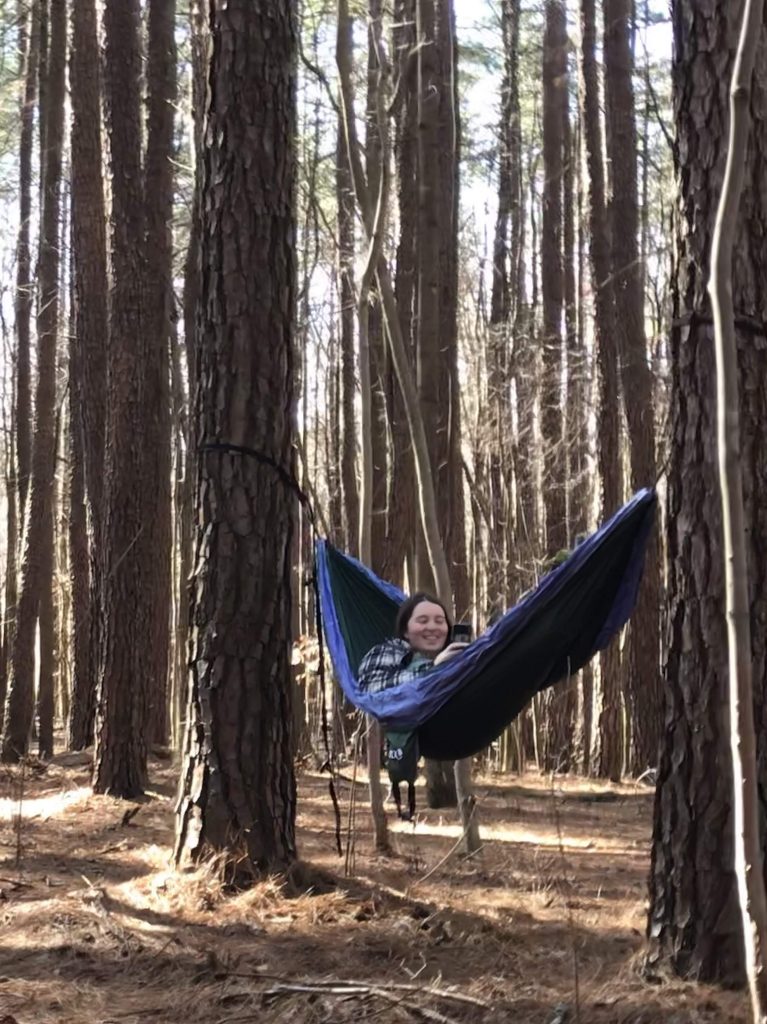Wandering in the Guilford woods, there are fewer pinecones than I expect. I find one, small and green, closed tightly around itself. I try to pry open the scales, but it feels glued shut, and a sticky resin now coats my fingertips. Rolling my hands together, the pine resin doesn’t budge.
There are only a few pinecones that have opened up for the season, ready to release seeds. Pinecones only open up in the heat, careful to protect their seeds. They don’t necessarily drop every season, or every year; some of them can cling to the tree for up to 10 years. They’re in no rush, and don’t need to follow our sense of time. For a tree that can live over 150 years, 10 years is a blink. They want to nurture their cones, let them grow and mature, and finally, when they’re ready, release them to the ground, where they only have a small chance of spreading the seeds.
Loblolly pines usually grow in muddy areas; the word “loblolly” actually means “muddy puddle.” The pinecones drop in areas ready for fertilization. The “female” cones are the ones that hold seeds, and the ones that we see and pay attention to. The “male” cones are simply pollinators, apparently rarely noticed.
Pinecones have been a source of symbolism, of art, throughout my life. In preschool we made turkey decorations out of them, sprinkled them with cinnamon and created feathers out of pipe cleaners. It’s something that still sits in my family’s house, hidden on a shelf, brought out around Thanksgiving. At summer camp, we used to throw them into the fire, watch them pop and explode. It’s a symbol of letting go, but also of memory and rebirth. A program here in Greensboro for kids dealing with a parent’s cancer has a tradition of throwing pinecones into fires after sharing their fears and their grief. It’s a way of letting go, but also of hope.
I once met someone who, whenever she was struggling with loss, would build a fire and toss a pinecone in it. “They only release their seeds in fire,” she says to me. “I don’t know, it feels like a metaphor.” She tosses a pinecone into our campfire. She doesn’t say what she’s mourning this time.
I can’t help but feel excited whenever I come across a pine cone that hasn’t been chewed up by a hungry squirrel or other animal. There’s something beautiful about a whole pine cone, freshly fallen and open, ready to tackle the world, yet still so fresh and new. They’ve been around long enough that we have fossils of ancient pinecones, yet they still remain nearly the same. They’ve figured out a system that works, and they’re consistent. The pinecones know what they’re doing. They may be new and fresh to this world, but their tall, tall parents watch over, guide the cones with their roots, and continue to grow.




